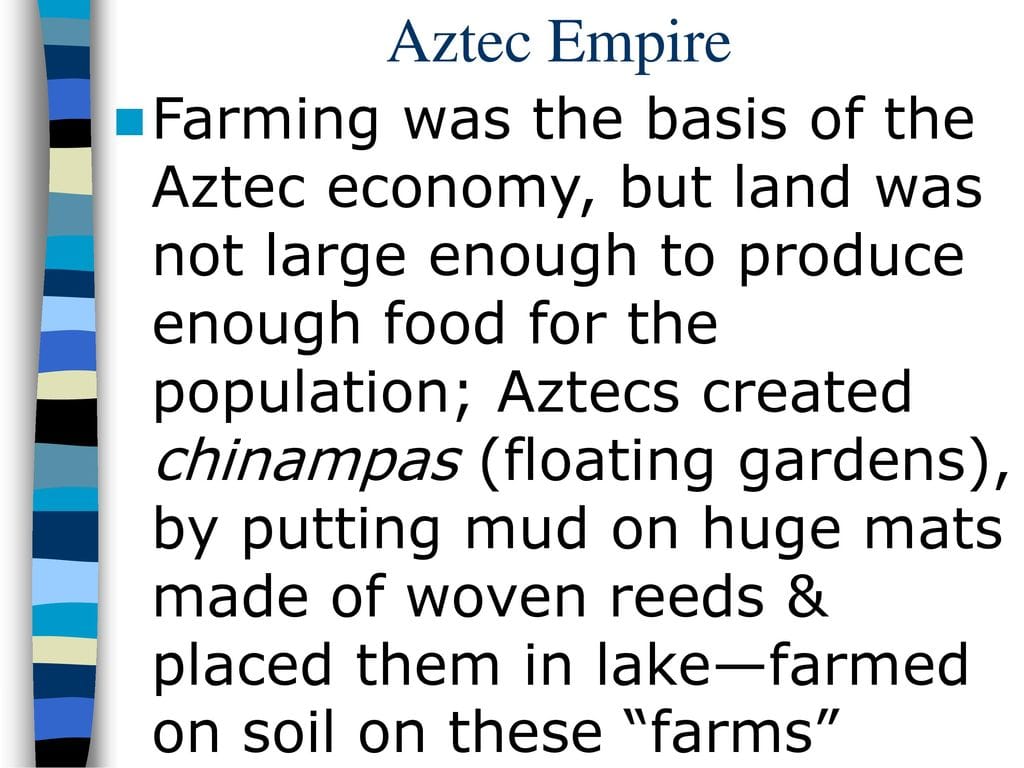More Than Floating Gardens: The Genius of Aztec Chinampas
Step into a world where ingenuity blossomed amidst the waters of Lake Texcoco. Faced with limited land and a burgeoning population, the Aztecs, masters of adaptation, crafted a solution as beautiful as it was practical: chinampas. These weren’t mere “floating gardens” adrift on the water; they were carefully engineered islands, testaments to a civilization in perfect harmony with its environment. Let’s dive into the fascinating world of chinampas, exploring how these ingenious creations transformed Lake Texcoco into the lifeblood of the Aztec Empire.
Building an Empire on Artificial Islands
Imagine a city floating on a lake. No, not Venice – we’re talking about Tenochtitlan, the heart of the Aztec Empire! But how did the Aztecs overcome the challenge of feeding a rapidly growing population on a lake? Their answer lay in the ingenious creation of chinampas.
More than just rafts with plants, chinampas were meticulously designed islands. The Aztecs started by driving stakes of wood, often readily available willow, into the lakebed to form a rectangular frame. Next, they layered reeds and other vegetation within this frame, creating a sturdy base. Finally, they dredged nutrient-rich mud and sediment from the lake bottom and piled it on top, forming fertile beds ready to burst with life.
But the Aztecs’ ingenuity didn’t stop there. They understood the vital link between their city and the lake. Canals were dug between the chinampas, transforming the lake into a network of waterways. These canals were their highways, facilitating transport and trade. More importantly, they acted as a natural irrigation system, ensuring a constant supply of water to the crops.
A Symphony of Sustainability: How Chinampas Fed an Empire
The chinampas were more than just farms; they were self-sustaining ecosystems, a testament to the Aztecs’ deep understanding of nature. The willow trees planted along the edges weren’t just for stability; they acted as natural anchors, their roots holding the islands firm against erosion. The shade from the willows protected crops from the intense Mexican sun, while their fallen leaves decomposed into nutrient-rich compost, further enriching the soil.
This remarkable system yielded an abundance of food. Maize, the cornerstone of their diet, flourished alongside beans, squash, tomatoes, and fiery chili peppers. Chinampas even provided a splash of color with vibrant flowers, showcasing the Aztecs’ appreciation for beauty alongside practicality.
What’s even more impressive is the sustainability of the chinampa system. Without modern fertilizers or complex irrigation, the Aztecs created a closed-loop system that maximized productivity while minimizing environmental impact.
A Legacy Etched in Water
Sadly, most of Lake Texcoco has been drained over the centuries. Yet, the legacy of the chinampas lives on. In Xochimilco, a network of canals on the outskirts of Mexico City, you can still find farmers tending to their crops on these ancient floating gardens. If you are interested in the ararat building and large buildings greece, you should definitely visit our most comprehensive blog post on this topic. A visit to Xochimilco isn’t just a boat trip; it’s a journey back in time, a chance to witness the enduring ingenuity of the Aztecs and their harmonious relationship with the natural world.
Though we’ve uncovered much about these floating gardens, archaeologists and historians continue to delve deeper into their secrets. How exactly were they maintained over generations? What role did they play in Aztec society beyond food production? The chinampas of Lake Texcoco offer not just a glimpse into the past but also inspiration for the future of sustainable agriculture. As we face growing concerns about land and water resources, perhaps the Aztecs’ ingenious solution, born from necessity and nurtured by nature, holds valuable lessons for us all.












